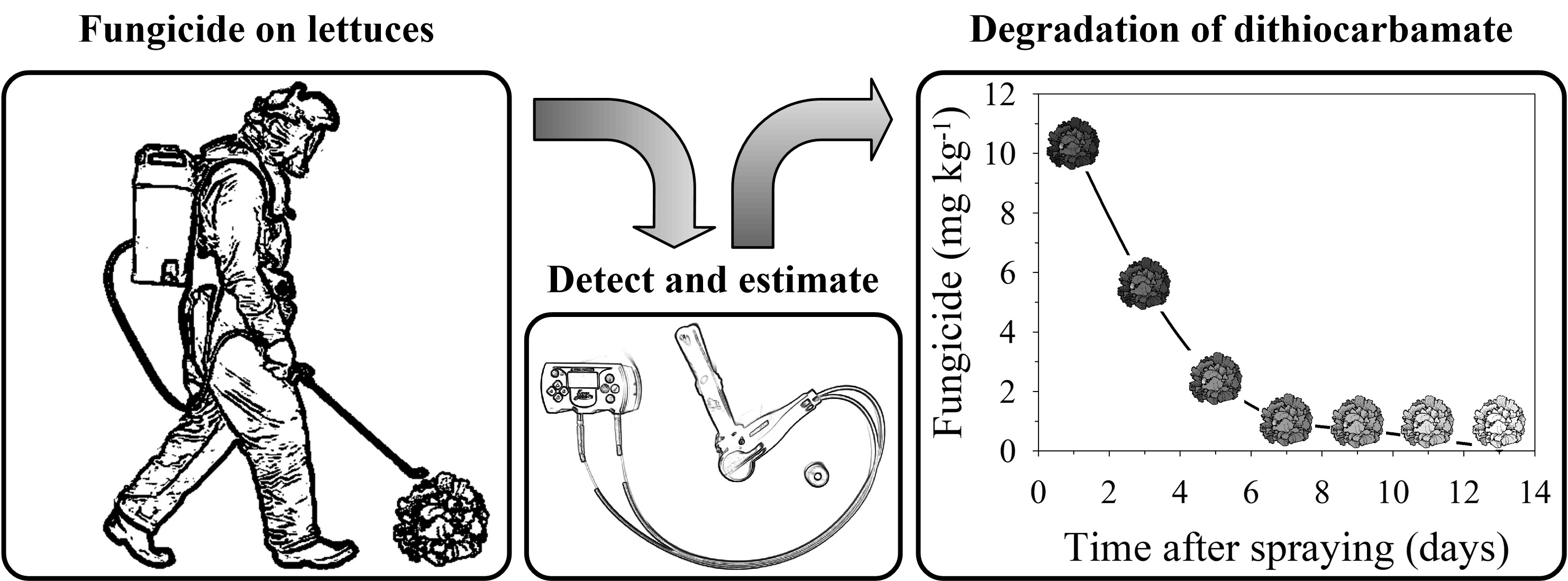Feasibility of Vis/NIR spectroscopy to detect and estimate fungicide residues on intact lettuces

Published 2020-05-13
Keywords
- dithiocarbamate,
- Lactuca sativa L.,
- multivariate data analysis,
- spectral reflectance
How to Cite
Funding data
-
Fundação de Amparo à Pesquisa do Estado de Minas Gerais
Grant numbers CAG-APQ-01495-15
Abstract
Pesticides are applied repeatedly to grain, fruit, and vegetable crops for protection against pathogens, pests, and weeds, in short periods of time before harvest. The effective and fast monitoring of chemical residues in agricultural products is important for the assurance of healthy food. This study was accomplished to evaluate the feasibility to detect and estimate the concentration of dithiocarbamate fungicide (mancozeb) residues on intact lettuce leaves based on Vis/NIR spectral reflectance measurements and multivariate data analysis. In the pre-harvest interval, a high initial rate of decline of dithiocarbamate residues was observed between one and seven days after pesticide spraying (decrease of 90.3%), while a slower decline was verified from seventh to fourteenth day (decrease of 8.7%). The usefulness of this spectrometric method has been evidenced by determination of dithiocarbamate residues at concentrations between 0.23 and 10.3 mg CS2 kg-1, with detection and quantitation limits of 0.49 and 1.41 mg CS2 kg-1, respectively. Vis/NIR spectral reflectance combined to the partial least square analysis have potential to be applied for estimating dithiocarbamate concentrations on intact lettuce leaves, presenting advantages such as real-time measurements and the possibility to be built into the industrial processing lines.





